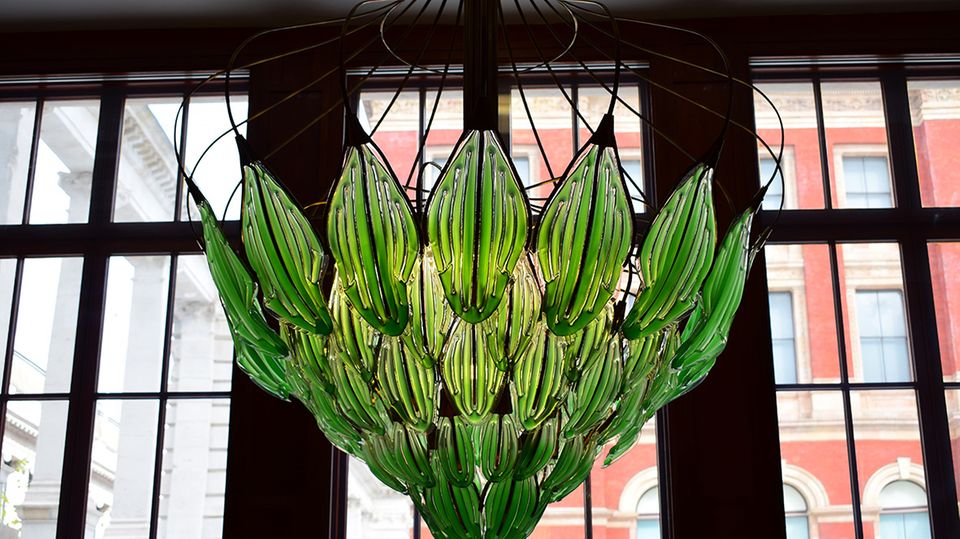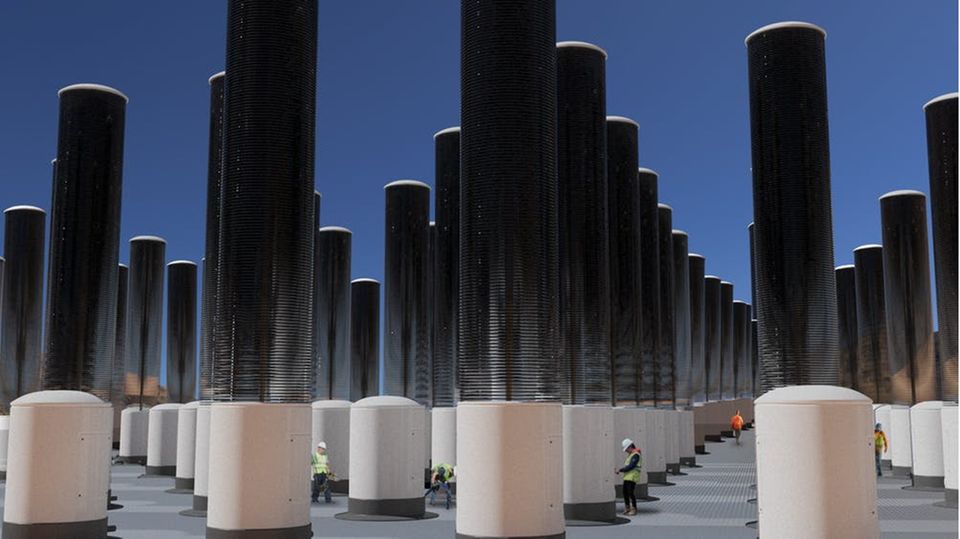solar energy
Solar Leaves – Plant-inspired photovoltaics are said to generate forty percent more electricity than conventional panels
The PV sheet in the laboratory setup.
© Gan Huang/Imperial
A new type of solar cell was developed in London. The cells use the water cycle of the plants, by cooling they increase the efficiency of the modules and solve another problem facing humanity: They can also produce drinking water.
Today, solar panels are in the form of large panels. But a team from Imperial College London has developed a new photovoltaic design: their solar panel resembles an artificial leaf. They believe their design can convert about 10 percent more solar energy into electricity. Today’s Modules achieve an efficiency of around 24 percent, the PV sheet should then reach 34 percent. This ten percent in relation to solar energy corresponds to an increase of around 40 percent in relation to the original value.
The innovation “uses inexpensive materials and could inspire the next generation of renewable energy technologies,” it said in a statement. The actual idea behind the PV sheet is to mimic the water cycle of a tree. Currently, a solar module can only convert part of the sun’s energy into electricity, the rest goes to a good extent as waste heat. This energy then heats up the PV module, which reduces the yield.
Cooling without mechanical components
“This innovative design holds enormous potential for significantly increasing the performance of solar modules while ensuring cost efficiency and practicality,” said Dr. Gan Huang, Honorary Research Fellow at the Department of Chemical Engineering and author of the new study. The PV sheet mimics the transpiration process that trees and plants use to transport water from their roots to the end of their leaves. This creates a water-cooled module without having to install pumps and the like. Natural fibers mimic leaf veins and gels act as storage cells. In this way, the heat is dissipated from the PV cells and the entire cycle is kept going by the heat of the sun alone. The process of the plant is based solely on the properties of the materials, so it is cheap to manufacture. Without motors and controls, the system should achieve a long service life.
More heat than electricity
The heating of the water can be used to produce not only electricity but also hot water and fresh water. “Implementing our innovative leaf-like design can help accelerate the global energy transition while addressing two pressing global challenges: the need for more energy and the need for fresh water,” said Professor Christos Markides, head of the Clean Energy Processes Laboratory and author of the study .
The waste heat is greater than the power generation. In the experiment, a photovoltaic cell was irradiated with 1000 watts of solar energy per square meter. Perspiration dissipated 590 watts of energy. Energy that is not used in a conventional module and leads to a poorer yield of solar power. Bio-cooling lowered the temperature of the module by 26 degrees Celsius, which in turn led to a relative increase in electrical energy production of 13.6 percent.
Researchers are always inspired by natural forms and functions. For example, mechanical trees were developed that bind CO2 from the air and turn it into biomass. Another example is algae trees. They pump a soup of algae through a system of transparent tubes. They also remove CO2 and generate biomass.
Source: Nature Communications




